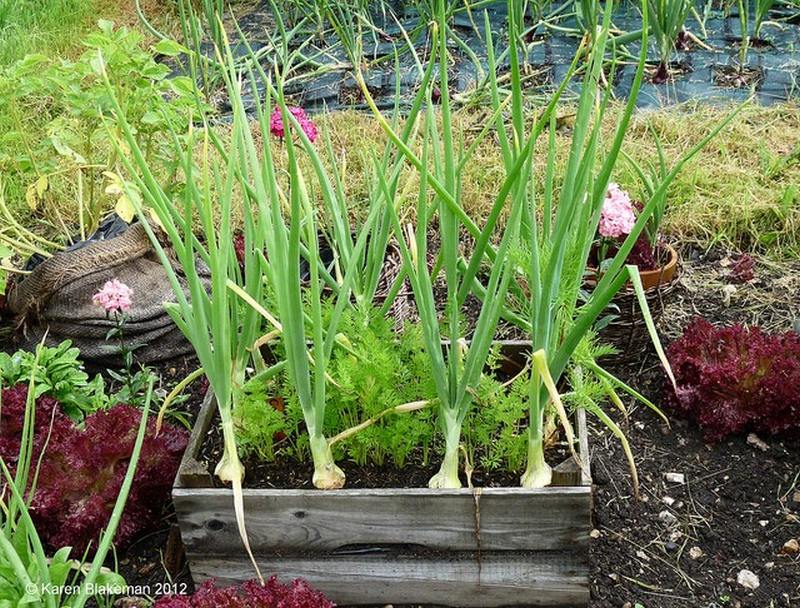|
One of the problems with mainstream farming is that large blocks of one type of plant are placed. Mono-cultures are a bad idea. Where mono-cultures are planted, herbicides, fungicides and pesticides are often required to keep weeds, pests and disease in check. Soils are damaged and depleted. Organic farms and gardens eschew these methods. Rather than planting mono-cultures, organic growers aim for as much biodiversity as possible. Companion planting is one important element of organic growing systems. What is Companion Planting?
When we talk about 'companion planting' really all we are talking about is planting more than one type of plant in the same growing area. Rather than sowing, for example, a whole bed of carrots, and another whole bed of onions, we plant the two together. Companion planting brings benefits to the individual plant types and to the system as a whole. Why Companion Planting is a Good Idea Companion planting increases biodiversity and in doing so, makes your garden more resilient. Different plant species can help each other in a wide range of different ways, and though we do not yet have an understanding of all these interactions, we can see evidence that they make organic gardening easier and more productive. The more biodiversity we create, and the more beneficial interactions arise, the more stable and sustainable our gardens can be. Types of Companion Planting Companion planting is all about creating 'guilds' or collaborative groups of plants and other living things which work together. Another word for these groups is 'polycultures'. Polycultures can be simple or complex. At its simplest, companion planting involves just two different types of plant, though it can also involve complex systems – even entire food forests. Companion plants help their 'bedfellows' in a range of different ways. They might:
Companion planting can also help gardeners to make the most of time and space in their gardens, and to increase yield over time. There is a lot to learn about this practice, but this is something that all organic gardeners should think about in their growing areas.
0 Comments
Leave a Reply. |
GROW ORGANIC!
|
|


 RSS Feed
RSS Feed




